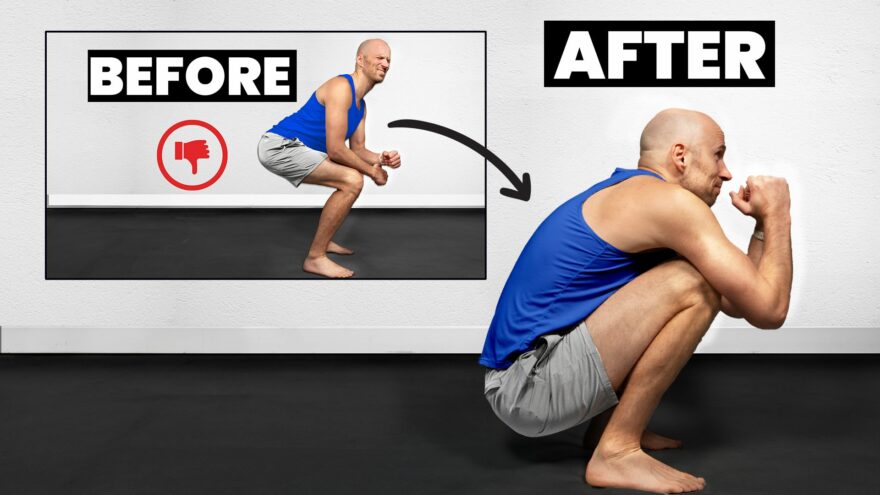Table of Contents
Improve Your Mobility the Right Way
As we step into 2024, it’s time to rethink our approach to mobility exercises.
If you want to be less stiff and move better, it’s tempting to try every exercise on social media ever. But hold up!
It’s crucial to avoid common pitfalls that can hinder your progress. I’ve been there, made these mistakes, and learned from them.
Now, I’m here to guide you through the right path to improved mobility.
Step 1: Ditch the Hip Tuck
Tucking the hips was a go-to earlier in my career. It improved mobility in a lot of patients and clients.
However, it often led to the following issues:
- Overloading the back during resistance exercises
- Not improving hip internal rotation in those with swayback posture
- Not achieving relative motion
That’s because it’s TOUGH to differentiate pelvic movement from spinal motion.
There’s a better way.
That’s focusing on ground contact. This cue promotes distal internal rotation, crucial for force production and joint mobility.
Distal internal rotation allows for proximal expansion. This is the key to gaining mobility.
Step 2: STOP Hip Shifting
Hip shifting is commonly used to improve rotation. Load into the hip socket as they say.
But there’s a problem.
It’s the same problem as the tuck. Most people often orient the entire body instead of improving relative motion.
This is especially problematic in loaded exercises like split squats. That’s because people take up all the range right from the get-go when you start with a shift. We don’t elevate our shoulder blades before we raise our arms. Why then, would we turn our pelvis before we move our femurs? Don’t…make…no…sense.
The solution? Gradual axial skeleton motion during movements, rather than immediate hip shifts. This approach yields far better mobility improvements.
Step 3: Avoid Taking MASSIVE Inhales
When it comes to mobility exercises, a massive inhale can be counterproductive. It engages neck muscles, restricts the upper airway, and limits expansion. When bigger muscles kick in, you get less segmental ribcage motion
Quiet and easy nasal inhales allow the ribs to move. This action creates uniform expansion and improves mobility.
Step 4: Don’t Force a Full Exhale
Forcing a full exhale can limit your next inhale, restricting expansion and mobility. It also orients the ribcage, limiting motion gains.
Instead, aim for a chill, easy exhale without expelling all the air. This reduces superficial muscle activity, facilitating better mobility.
Step 5: Avoid Overreaching
Reaching to end range? Same song and dance. You produce unnecessary tension and often orient the thorax. Aka no mobility gains.
The solution? Stay within a comfortable range. If weight-bearing, focus on ground contact points. Keep 3-4/10 pressure. If your arm is in the air, hold the position, no reach.
If I am moving my arms, like in a press, then I pace breathing with the reach. Exhale on the concentric, inhale on the eccentric.
Sum up
Embrace effortlessness in your mobility drills. That’s the overarching theme for 2024. Dial down the intensity to maximize expansion. Your mobility program should be easy, effortless, and flowy. Less tension means more freedom of movement.
Struggle with constant tension? Check out this post for movements to skyrocket your mobility gains.
